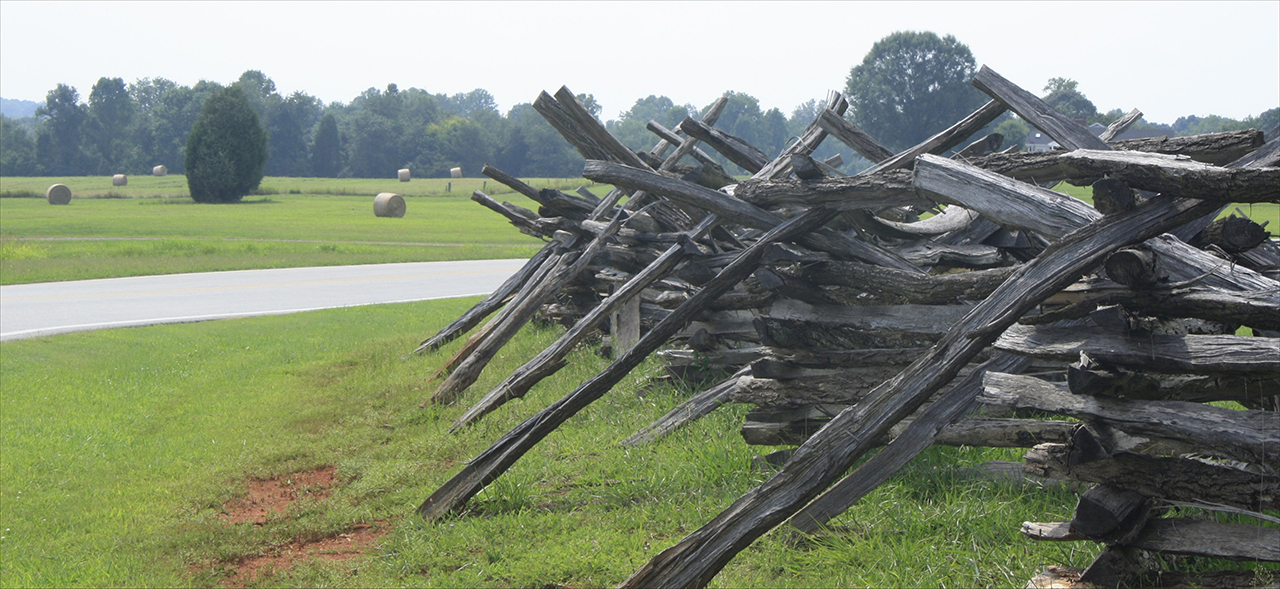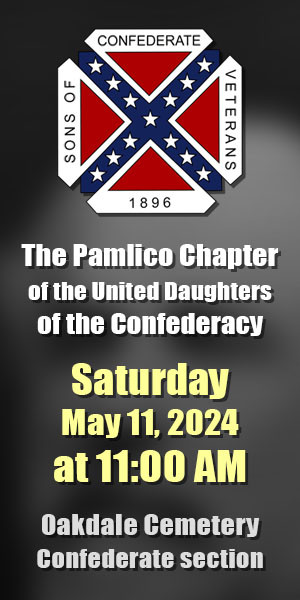Committed to the First Amendment and OUR Freedom of Speech since 2008
Fort Dobbs Linked N.C. To First 'world War'
Publisher's note: The North Carolina History Project is in association with the John Locke Foundation, whereby this one hundred and twenty-seventh installment is authored by Dr. Troy Kickler, Founding Director of the North Carolina History Project and Editor of NorthCarolinaHistory.org.
Located only a few minutes' drive from Statesville is Fort Dobbs - North Carolina's only frontier fort during the French and Indian War (also known as the Seven Years War).
Although the solid, wooden-block, three-story structure's dimensions and shape allowed as many as 100 soldiers to fire muskets simultaneously, the fort was manned by only about 50 soldiers. The structure has not been standing for more than two centuries; however, archeologists and historians have determined its dimensions and exact location.
 Fort Dobbs in Iredell County: Above and below. photo by Stan Deatherage Click tio image to enlarge.
Fort Dobbs in Iredell County: Above and below. photo by Stan Deatherage Click tio image to enlarge.

As a result, visitors can see the structure's dimensions and imagine its bulk and height, observing its exact location by means of a stringed outline secured by posts.
The French and Indian War occurred mostly in what became the northern and midwestern United States. (Parts of the conflict also occurred in Canada). The soon-to-be southern United States saw far fewer engagements (at least on a major scale) and built far fewer forts than their northern colonial counterparts.
To protect its western settlers, North Carolina, in particular, established Fort Dobbs.
Many scholars argue that the Seven Years War was the first global conflict in modern warfare. Involving and influencing other European nations, to be sure, the conflict pitted France and various Indian tribes against the British, American colonists, and various Indian tribes.
For some time, France and Britain had wanted the same land. Not surprisingly, Native American tribes had different degrees of alarm and anticipation regarding French and English encroachment, and accordingly they chose sides in hopes of enhancing their tribal interests.
French trappers and traders had operated in the now midwestern states, and American colonists (not all of English origin) had moved westward for economic and other opportunities. France worked to claim the land via a southward path from Canada to its Louisiana claims. Meanwhile, the English and the colonists moved westward from their eastern settlements.
Eventually the two European nations' respective longitudinal and latitudinal paths crossed, and conflict ensued. The global conflict lasted - you guessed it! - seven years, from 1756-63.
The British and their allies won the conflict. Eventually, the British government, through parliamentary action, demanded that American colonists to reimburse the British government for providing frontier protection.
Parliament passed the Proclamation of 1763, an act that limited American expansion by placing control over western settlement in the hands of the British government. Parliament later passed the Sugar Act (1764) and the Stamp Act (1765). After decades of "salutary neglect," many angry American colonists, with an expansionist impulse, put forth arguments proclaiming "No taxation without representation!"
Although North Carolina citizens witnessed minimal fighting within the colony's boundaries during the French and Indian War, North Carolina militia fought as far north as New York, and North Carolina was the first colony to respond to Virginia's request for help as English and French interests collided in the Ohio Valley, which Virginia claimed as its territory.
Fort Dobbs is named after North Carolina Royal Gov. Arthur Dobbs, who served from 1759-65 and was credited by historians for working to improve North Carolina's economic status and educational system while working to establish the Church of England.
The only known conflict to occur at or near Fort Dobbs occurred on Feb. 27, 1760, when approximately 60 Cherokee Inidans failed to take the garrison. According to reports, between 10 and 12 Cherokee were killed or wounded, and two Americans were wounded (one severely).
One boy was killed, but that seemed to be because he unintentionally found himself in harm's way. It was not uncommon for settlers occasionally to be near the fort for protection, or for merchants and cooks to sell goods or food to soldiers.
During a sweltering day last year in July - when first-come, first-served claims to a shade tree might have been worth as much as owning gold - this historian's imaginings of what the actual Fort Dobbs might have looked like more than two centuries ago ran rampant.
Go Back
Located only a few minutes' drive from Statesville is Fort Dobbs - North Carolina's only frontier fort during the French and Indian War (also known as the Seven Years War).
Although the solid, wooden-block, three-story structure's dimensions and shape allowed as many as 100 soldiers to fire muskets simultaneously, the fort was manned by only about 50 soldiers. The structure has not been standing for more than two centuries; however, archeologists and historians have determined its dimensions and exact location.
 Fort Dobbs in Iredell County: Above and below. photo by Stan Deatherage Click tio image to enlarge.
Fort Dobbs in Iredell County: Above and below. photo by Stan Deatherage Click tio image to enlarge.

As a result, visitors can see the structure's dimensions and imagine its bulk and height, observing its exact location by means of a stringed outline secured by posts.
The French and Indian War occurred mostly in what became the northern and midwestern United States. (Parts of the conflict also occurred in Canada). The soon-to-be southern United States saw far fewer engagements (at least on a major scale) and built far fewer forts than their northern colonial counterparts.
To protect its western settlers, North Carolina, in particular, established Fort Dobbs.
Many scholars argue that the Seven Years War was the first global conflict in modern warfare. Involving and influencing other European nations, to be sure, the conflict pitted France and various Indian tribes against the British, American colonists, and various Indian tribes.
For some time, France and Britain had wanted the same land. Not surprisingly, Native American tribes had different degrees of alarm and anticipation regarding French and English encroachment, and accordingly they chose sides in hopes of enhancing their tribal interests.
French trappers and traders had operated in the now midwestern states, and American colonists (not all of English origin) had moved westward for economic and other opportunities. France worked to claim the land via a southward path from Canada to its Louisiana claims. Meanwhile, the English and the colonists moved westward from their eastern settlements.
Eventually the two European nations' respective longitudinal and latitudinal paths crossed, and conflict ensued. The global conflict lasted - you guessed it! - seven years, from 1756-63.
The British and their allies won the conflict. Eventually, the British government, through parliamentary action, demanded that American colonists to reimburse the British government for providing frontier protection.
Parliament passed the Proclamation of 1763, an act that limited American expansion by placing control over western settlement in the hands of the British government. Parliament later passed the Sugar Act (1764) and the Stamp Act (1765). After decades of "salutary neglect," many angry American colonists, with an expansionist impulse, put forth arguments proclaiming "No taxation without representation!"
Although North Carolina citizens witnessed minimal fighting within the colony's boundaries during the French and Indian War, North Carolina militia fought as far north as New York, and North Carolina was the first colony to respond to Virginia's request for help as English and French interests collided in the Ohio Valley, which Virginia claimed as its territory.
Fort Dobbs is named after North Carolina Royal Gov. Arthur Dobbs, who served from 1759-65 and was credited by historians for working to improve North Carolina's economic status and educational system while working to establish the Church of England.
The only known conflict to occur at or near Fort Dobbs occurred on Feb. 27, 1760, when approximately 60 Cherokee Inidans failed to take the garrison. According to reports, between 10 and 12 Cherokee were killed or wounded, and two Americans were wounded (one severely).
One boy was killed, but that seemed to be because he unintentionally found himself in harm's way. It was not uncommon for settlers occasionally to be near the fort for protection, or for merchants and cooks to sell goods or food to soldiers.
During a sweltering day last year in July - when first-come, first-served claims to a shade tree might have been worth as much as owning gold - this historian's imaginings of what the actual Fort Dobbs might have looked like more than two centuries ago ran rampant.
| Disagreement Over Charter Approvals Goes Public | Carolina Journal, NC Past, In the Past, Editorials, Body & Soul, Op-Ed & Politics | Donald Trump's Temperament to be Commander-in-Chief |
Latest Op-Ed & Politics
|
illegal alien "asylum seeker" migrants are a crime wave on both sides of the Atlantic
Published: Tuesday, April 23rd, 2024 @ 9:44 am
By: John Steed
|
|
only one holdout against acquital
Published: Tuesday, April 23rd, 2024 @ 9:01 am
By: John Steed
|
|
DEI now includes criminals?
Published: Monday, April 22nd, 2024 @ 8:33 pm
By: John Steed
|
|
Biden regime intends to force public school compliance as well as colleges
Published: Monday, April 22nd, 2024 @ 1:55 pm
By: John Steed
|
|
clamps down on oil drilling in Alaska
Published: Monday, April 22nd, 2024 @ 9:09 am
By: John Steed
|
|
plan put in place by Eric Holder
Published: Monday, April 22nd, 2024 @ 7:38 am
By: John Steed
|
|
prosecutors appeal acquittal of member of parliament in lower court for posting Bible verse
Published: Sunday, April 21st, 2024 @ 9:14 am
By: John Steed
|
|
Biden abuses power to turn statute on its head; womens groups to sue
Published: Friday, April 19th, 2024 @ 8:28 pm
By: John Steed
|






















